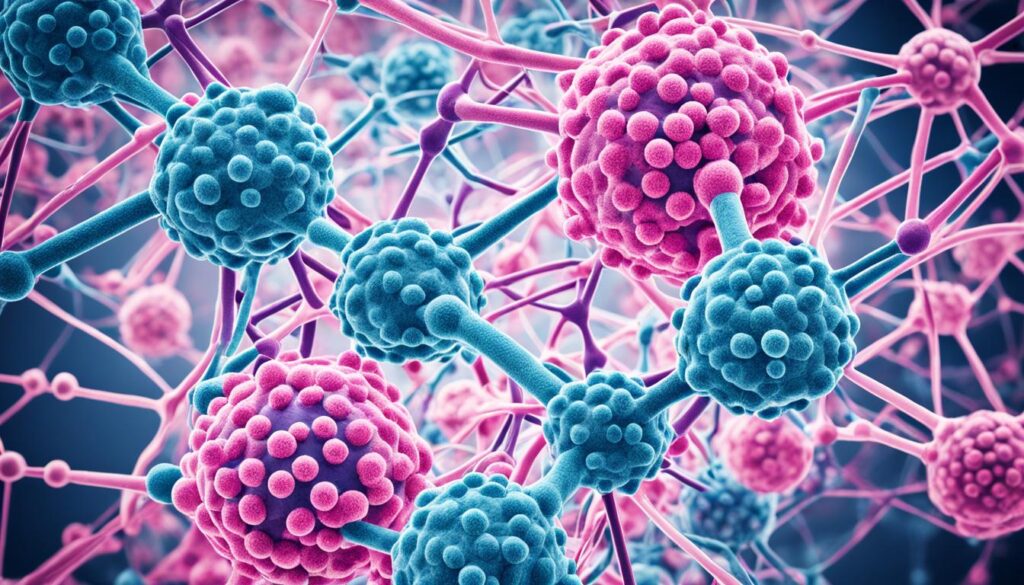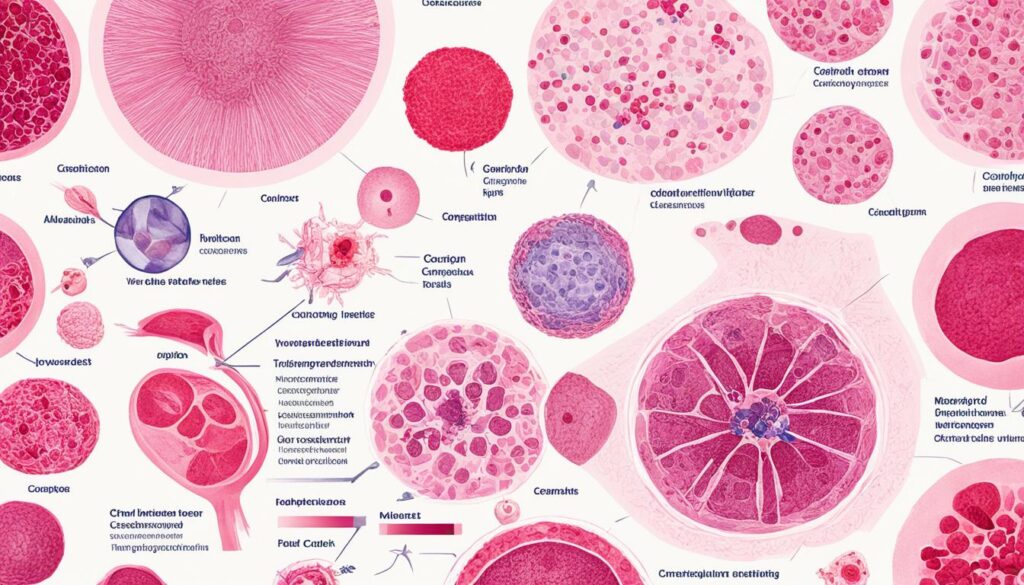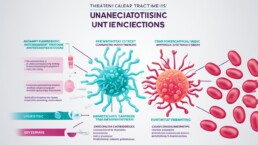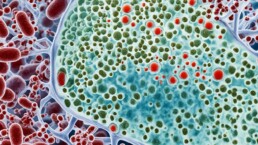Medically reviewed by Dr Chandril Chugh,
Renowned Neurologist and American Trained Specialist
Welcome to our comprehensive guide on the molecular classification of breast cancer. In this article, we will delve into the significance of molecular classification in revolutionizing treatment options for breast cancer patients in India.
Table of Contents
ToggleAs a leading cause of cancer-related deaths among women in India, breast cancer demands a deeper understanding and more tailored treatment approaches. By exploring the molecular characteristics of breast cancer, we can better identify the specific subtypes and customize treatment plans accordingly.
Throughout this guide, we will discuss the traditional classification methods currently used, the introduction of molecular classification, and the different molecular subtypes of breast cancer. We will also explore the benefits of molecular classification and the challenges faced in implementing this approach in India.
Our aim is to empower you with the knowledge necessary to navigate the complexities of breast cancer treatment and stay informed about the latest advancements in molecular classification.
So, let’s embark on this journey together and unlock the potential of molecular classification in guiding more effective and personalized treatment strategies for breast cancer patients in India.
Understanding Breast Cancer
Before diving into the fascinating world of molecular classification, it’s essential to have a basic understanding of breast cancer. Awareness about this prevalent disease, its risk factors, and common diagnostic methods is crucial for all individuals in India. In this section, we will provide you with an overview of breast cancer, equipping you with the knowledge to navigate the complexities of this condition.
Prevalence of Breast Cancer in India
Breast cancer is the most common cancer among women in India, accounting for approximately 27% of all cancer cases in females. The incidence rate is steadily rising, and it is projected that by 2030, there will be over 200,000 new cases of breast cancer reported annually in the country. Early detection plays a vital role in improving survival rates and treatment outcomes.
Risk Factors and Common Diagnostic Methods
Breast cancer can affect women of all ages, although the risk increases with age. Several factors contribute to the development of breast cancer, including genetics, hormonal influences, lifestyle choices, and environmental factors. Common risk factors include a family history of breast cancer, certain genetic mutations (such as BRCA1 and BRCA2), hormonal imbalances, obesity, and alcohol consumption.
Early detection of breast cancer is crucial for successful treatment. Regular breast self-examinations, clinical breast examinations by healthcare professionals, and mammograms are important diagnostic methods. Mammography is a screening tool that uses low-dose X-rays to detect abnormalities or changes in breast tissue.

Awareness and Early Intervention
Increasing awareness about breast cancer is pivotal in India’s fight against this disease. Educating individuals about the importance of self-examinations, mammograms, and early intervention can empower women to take charge of their breast health. Additionally, comprehensive screening programs and access to quality healthcare services can significantly contribute to early detection and improved outcomes.
Traditional Classification Methods
In the field of breast cancer diagnosis, traditional classification methods have long been employed to analyze tumor characteristics and guide treatment decisions. These methods primarily utilize histological and pathological criteria to categorize breast cancer into different subtypes.
Types of Traditional Classification Methods
The two commonly used traditional classification methods include:
- Histological Classification: This method evaluates the microscopic characteristics of tumor tissue samples obtained through biopsy or surgery. It helps identify the specific type of breast cancer, such as invasive ductal carcinoma or lobular carcinoma, based on tissue architecture and cell types.
- Pathological Classification: Pathological classification focuses on evaluating specific features within tumor cells, such as hormone receptor status (estrogen and progesterone receptors) and HER2/neu protein expression. These classification markers provide vital information about the behavior of the cancer cells and potential response to targeted therapies.
While traditional classification methods have played a crucial role in diagnosing and treating breast cancer, they have certain limitations:
- Lack of Personalization: Traditional methods rely on broad categorizations that may not capture the unique characteristics of each individual’s cancer. This one-size-fits-all approach might not fully address the heterogeneity of breast cancer and may limit the effectiveness of treatment strategies.
- Subjectivity: Traditional classification methods require subjective interpretation by pathologists, leading to variations in classification and potential diagnostic errors.
Moving Towards Molecular Classification
To overcome the limitations of traditional classification methods, there has been a shift towards molecular classification in breast cancer research and clinical practice. By analyzing the molecular profiles and genetic alterations of tumors, molecular classification provides a more comprehensive understanding of breast cancer subtypes, allowing for personalized treatment approaches.
Next, we will delve into the introduction of molecular classification and explore the various molecular subtypes of breast cancer.

Introduction to Molecular Classification
At the forefront of transforming the field of breast cancer diagnosis and treatment is the introduction of molecular classification. By analyzing gene expression patterns and genetic alterations, we can gain a deeper understanding of the intricate complexities of breast cancer and develop personalized treatment approaches. This groundbreaking approach to classification has revolutionized the way in which breast cancer is understood and managed.
Molecular classification allows us to categorize breast cancer into distinct subtypes based on the underlying molecular characteristics of the tumor cells. These subtypes provide valuable insights into how the cancer develops, spreads, and responds to various treatment options. By tailoring treatment plans according to the specific molecular subtype, we can optimize outcomes and improve the overall quality of care for patients.
One of the key benefits of molecular classification is its ability to identify patients who are more likely to respond to targeted therapies. By analyzing the genetic makeup of the tumor, we can determine if certain mutations or biomarkers are present, allowing us to select the most appropriate treatment options. This personalized approach minimizes unnecessary treatments and focuses on therapies that are most likely to be effective.
The introduction of molecular classification has also aided in enhancing the accuracy of prognosis and prediction of breast cancer outcomes. By understanding the genetic alterations within a tumor, we can better assess the aggressiveness of the cancer and predict its likelihood of recurrence. This information empowers healthcare professionals to develop tailored follow-up plans and provide patients with more accurate prognostic information.
Molecular Classification Subtypes of Breast Cancer
Through molecular classification, breast cancer can be categorized into several distinct subtypes, each with its own unique characteristics and treatment considerations. These subtypes include:
- Luminal A: This subtype is characterized by the presence of hormone receptors and has a more favorable prognosis compared to other subtypes. Treatment options for Luminal A breast cancer often involve hormone therapy.
- Luminal B: Luminal B breast cancer is also hormone receptor-positive but may have higher proliferative rates and a poorer prognosis. Treatment may involve a combination of hormone therapy and chemotherapy.
- HER2-enriched: This subtype is characterized by an overexpression of the human epidermal growth factor receptor 2 (HER2) protein. Targeted therapies, such as HER2 inhibitors, are commonly used in the treatment of HER2-enriched breast cancer.
- Basal-like: Basal-like breast cancer, also known as triple-negative breast cancer, lacks hormone receptors and the HER2 protein. Chemotherapy is commonly used as the primary treatment for this aggressive subtype.
Understanding these distinct subtypes is crucial in guiding treatment decisions and tailoring therapies to maximize efficacy while minimizing side effects. Molecular classification provides valuable insights that allow us to deliver more personalized and targeted care to patients with breast cancer.
Future Implications of Molecular Classification
The introduction of molecular classification marks a significant step forward in the field of breast cancer research and treatment. As advancements continue to be made in this area, the potential for precise and individualized therapy options grows. By harnessing the power of molecular classification, we can improve patient outcomes and work towards a future where breast cancer is not only better understood but also more effectively managed.
| Molecular Subtype | Treatment Approach | Prognosis |
|---|---|---|
| Luminal A | Hormone therapy | Favorable |
| Luminal B | Hormone therapy + chemotherapy | Varies |
| HER2-enriched | HER2-targeted therapy | Varies |
| Basal-like | Chemotherapy | Varies |
Different Molecular Subtypes of Breast Cancer
In the world of breast cancer, no two cases are exactly alike. As we dive deeper into the molecular classification of breast cancer, we uncover the existence of distinct molecular subtypes that further influence treatment decisions and overall prognosis. These subtypes are characterized by different gene expression patterns and genetic alterations, shedding light on the unique biology of each tumor.
Let’s take a closer look at some of the key molecular subtypes of breast cancer:
Luminal A:
Luminal A breast cancer is the most common subtype, accounting for approximately 40% of all breast cancer cases(1). It is characterized by the presence of estrogen receptors (ER) and/or progesterone receptors (PR) on the surface of cancer cells. Luminal A tumors typically have a favorable prognosis and respond well to hormone therapy.
Luminal B:
Luminal B breast cancer, similar to Luminal A, expresses estrogen receptors (ER) and/or progesterone receptors (PR). However, Luminal B tumors tend to be more aggressive and have a higher proliferation rate compared to Luminal A tumors. They may require additional treatment modalities such as chemotherapy in addition to hormone therapy.
HER2-enriched:
HER2-enriched breast cancer is characterized by overexpression of the human epidermal growth factor receptor 2 (HER2) protein. These tumors typically have a higher grade and are associated with a worse prognosis. However, targeted therapies like HER2-targeted agents have significantly improved outcomes for HER2-enriched breast cancer patients.
Basal-like:
The basal-like subtype, also known as triple-negative breast cancer, lacks estrogen receptors (ER), progesterone receptors (PR), and human epidermal growth factor receptor 2 (HER2) amplification. This subtype tends to be aggressive and associated with a poorer prognosis. Treatment options for basal-like breast cancer often focus on chemotherapy and targeted therapies.
The molecular subtypes of breast cancer serve as critical markers in guiding treatment decisions and predicting patient outcomes. By understanding the unique characteristics of each subtype, healthcare professionals can tailor therapies to target specific weaknesses or vulnerabilities, resulting in more effective and personalized treatment strategies.
| Molecular Subtype | Characteristics | Treatment Approaches |
|---|---|---|
| Luminal A | Expression of estrogen receptors (ER) and/or progesterone receptors (PR) | Hormone therapy |
| Luminal B | Expression of estrogen receptors (ER) and/or progesterone receptors (PR) Higher proliferation rate | Hormone therapy, possibly chemotherapy |
| HER2-enriched | Overexpression of HER2 protein | HER2-targeted agents |
| Basal-like | Lack of estrogen receptors (ER), progesterone receptors (PR), and HER2 amplification | Chemotherapy, targeted therapies |
Understanding the distinct molecular subtypes of breast cancer is crucial in tailoring treatment plans and providing the best care possible for patients. By leveraging the power of molecular classification, we can continue to make advancements in breast cancer research and improve outcomes for patients in India and around the world.

Benefits and Challenges of Molecular Classification
When it comes to the treatment of breast cancer, molecular classification has emerged as a powerful tool in guiding targeted therapies and individualized treatment plans. By analyzing the gene expression patterns and genetic alterations of tumors, healthcare professionals can gain a deeper understanding of the disease and offer personalized treatment strategies. Let’s explore the benefits and challenges of this groundbreaking approach in the Indian context.
Tailoring Targeted Therapies
One of the key benefits of molecular classification is its ability to tailor targeted therapies according to the specific molecular subtype of breast cancer. Through comprehensive genomic profiling, researchers and clinicians can identify unique molecular markers that drive tumor growth and develop therapies that target these specific abnormalities. This personalized approach allows for more effective treatment outcomes and improved patient survival rates.
Individualized Treatment Plans
Molecular classification allows healthcare professionals to develop individualized treatment plans based on the molecular characteristics of each patient’s tumor. By understanding the specific molecular alterations driving the cancer, clinicians can select the most appropriate treatment options, including chemotherapy, hormone therapy, targeted therapy, or immunotherapy. This personalized treatment approach minimizes unnecessary treatments and reduces the risk of adverse side effects, thereby improving patient quality of life.
Improved Prognostic Accuracy
Molecular classification provides valuable prognostic information that helps healthcare professionals predict patient outcomes more accurately. By identifying specific molecular subtypes associated with different clinical behaviors, such as tumor aggressiveness and metastatic potential, clinicians can make more informed decisions regarding the need for adjuvant therapy, additional surveillance, or follow-up care. This improved prognostic accuracy ensures that patients receive the most appropriate level of care tailored to their individual needs.
Challenges of Implementing Molecular Classification in India
While the benefits of molecular classification are evident, there are several challenges to its widespread implementation in India. These challenges include:
- Limited access to advanced genomic testing technologies and expertise
- High costs associated with molecular profiling
- Inadequate infrastructure to support genomic research and analysis
- Varied availability of targeted therapies in different regions
- Overcoming language and cultural barriers in patient education and counseling
Addressing these challenges requires collaborative efforts from healthcare providers, research institutions, policymakers, and patient advocacy groups to ensure that all breast cancer patients in India can benefit from the potential of molecular classification.
Through continued advancements in technology, increased awareness, and improved healthcare infrastructure, India can overcome these challenges and position itself at the forefront of molecular classification in breast cancer treatment. By harnessing the power of genomic data, we can transform the management of breast cancer and offer hope to patients and their families.
| Benefit | Explanation |
|---|---|
| Tailoring Targeted Therapies | Identify specific molecular markers to develop therapies targeting tumor abnormalities. |
| Individualized Treatment Plans | Create personalized treatment plans based on the molecular characteristics of the tumor. |
| Improved Prognostic Accuracy | More accurately predict patient outcomes based on molecular subtype characteristics. |
Conclusion
In conclusion, the molecular classification of breast cancer holds great promise in guiding more effective and personalized treatment strategies for patients in India. With this revolutionary approach, doctors and researchers can better understand the underlying genetic drivers of breast cancer, allowing for targeted therapies that address the specific characteristics of each patient’s tumor.
By identifying the molecular subtypes of breast cancer, such as Luminal A, Luminal B, HER2-enriched, and Basal-like, healthcare professionals can tailor treatment plans to optimize outcomes. This individualized approach has the potential to improve survival rates and reduce the side effects associated with traditional treatment methods.
However, implementing molecular classification in India comes with its own set of challenges. Limited access to genomic testing facilities, cost considerations, and the need for specialized training are some of the hurdles that need to be overcome. Continuous education and collaboration between different healthcare stakeholders will be essential to ensure that all breast cancer patients in India can benefit from this cutting-edge technology.
As research in the field of molecular classification progresses, it is crucial for healthcare professionals, patients, and their families to stay informed about the latest advancements. By keeping up with the developments in this area, we can work towards improving the outcomes and quality of life for breast cancer patients in India.
FAQ
What is the molecular classification of breast cancer?
The molecular classification of breast cancer is a system that divides breast cancer into different subtypes based on gene expression patterns and genetic alterations. It provides a more detailed understanding of the disease and helps in determining personalized treatment strategies.
Why is understanding breast cancer important?
Understanding breast cancer is crucial because it helps individuals recognize the signs and symptoms, identify risk factors, and seek appropriate medical care. It also aids in raising awareness about the importance of early detection and promotes a proactive approach to breast health.
What are the traditional classification methods for breast cancer?
The traditional classification methods for breast cancer involve histological and pathological criteria. They include factors such as tumor size, lymph node involvement, and hormone receptor status. While these methods have been valuable, they have limitations in providing personalized treatment options.
How does molecular classification revolutionize the understanding and treatment of breast cancer?
Molecular classification revolutionizes the understanding and treatment of breast cancer by identifying specific genetic alterations and gene expression patterns within tumors. This information helps determine the molecular subtype of breast cancer, which in turn guides treatment decisions and predicts prognosis.
What are the different molecular subtypes of breast cancer?
There are several molecular subtypes of breast cancer, including Luminal A, Luminal B, HER2-enriched, and Basal-like. Each subtype has distinct characteristics and requires tailored treatment approaches based on its specific molecular profile.
What are the benefits of molecular classification in breast cancer?
Molecular classification in breast cancer provides several benefits, such as identifying targeted therapy options based on the specific genetic alterations present in the tumor. It also helps in predicting treatment response and prognosis, allowing for more individualized and effective treatment plans.
What are the challenges faced in implementing molecular classification in India?
Implementing molecular classification in India faces challenges such as limited access to advanced genomic testing technologies, lack of awareness among healthcare professionals, and cost considerations. Overcoming these challenges is essential to ensure wider adoption and improved patient outcomes.
How does the molecular classification of breast cancer benefit patients in India?
The molecular classification of breast cancer benefits patients in India by providing personalized treatment strategies tailored to their specific tumor characteristics. This approach improves treatment outcomes, reduces unnecessary treatments, and enhances overall patient care.
What is the significance of keeping up with advancements in the molecular classification of breast cancer?
Staying informed about the latest advancements in the molecular classification of breast cancer is crucial to improve patient care. It ensures that healthcare professionals can utilize the most up-to-date knowledge and technologies to provide the best possible treatment options and prognosis for patients.

This article is medically reviewed by Dr. Chandril Chugh, Board-Certified Neurologist, providing expert insights and reliable health information.
Dr. Chandril Chugh is a U.S.-trained neurologist with over a decade of experience. Known for his compassionate care, he specializes in treating neurological conditions such as migraines, epilepsy, and Parkinson’s disease. Dr. Chugh is highly regarded for his patient-centered approach and dedication to providing personalized care.








